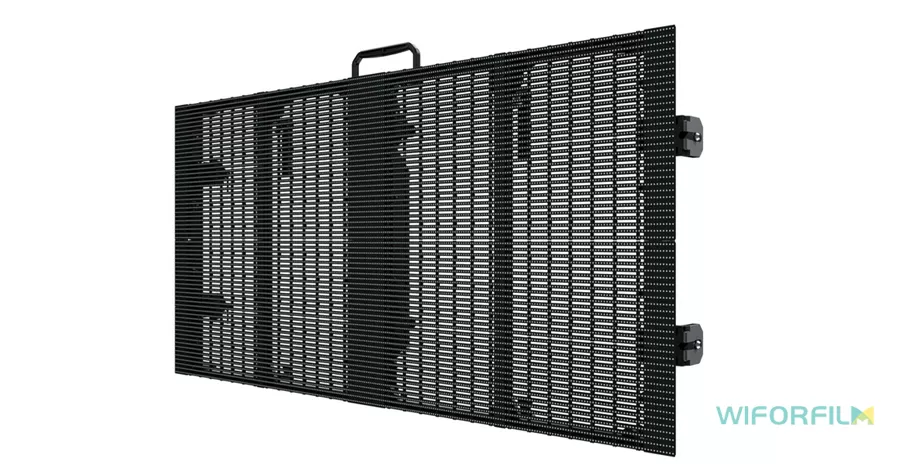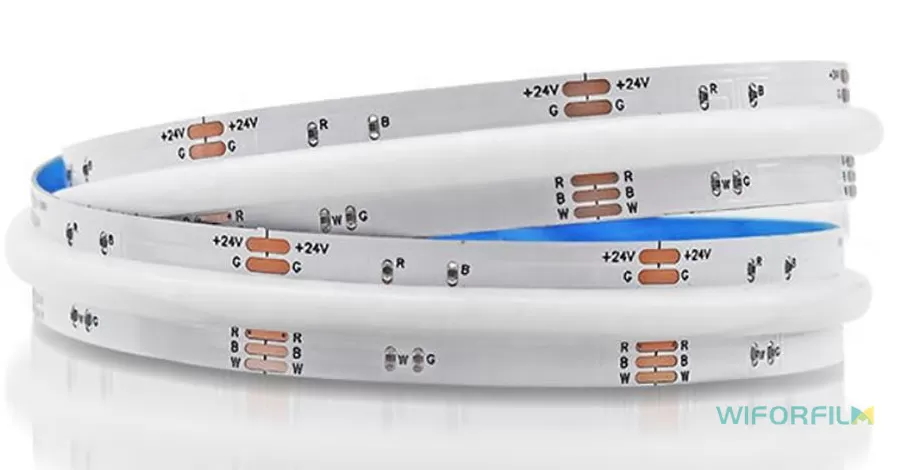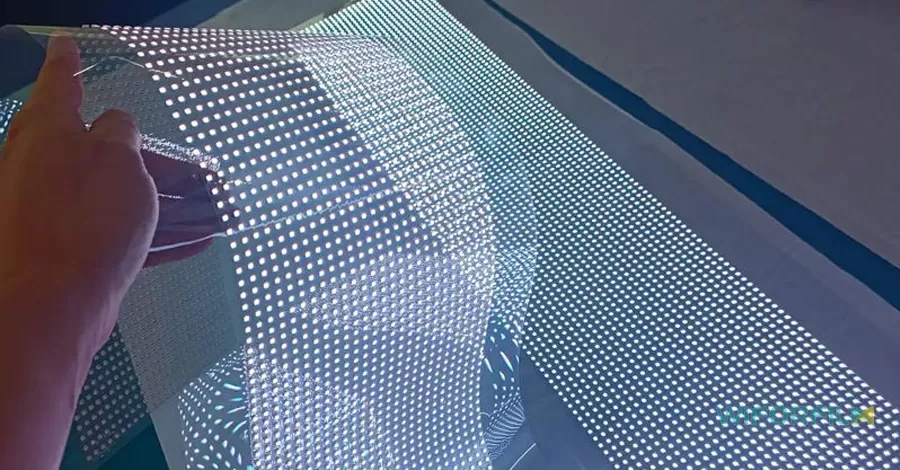LED film is a unique display technology known for its exceptional thinness, flexibility, transparency, and simple installation, making it distinct from traditional, rigid LED panels. These qualities allow it to turn glass surfaces into dynamic, high-resolution screens for advertising and decor while maintaining natural light and visibility.
Specific Qualities of LED Film
Physical Characteristics
- Ultra-thin and lightweight: With a thickness as minimal as 1 to 3 mm and a weight of about 1.3 kg per square meter, LED film is significantly lighter and thinner than traditional LED screens.
- High flexibility: Built on a flexible transparent substrate, the film can be bent, wrapped, or cut into custom sizes and shapes to fit curved surfaces, such as architectural columns or windows.
- High transparency: The design embeds micro-LEDs onto a clear adhesive film, providing high light permeability, typically between 70% and 95%. This allows viewers to see both the displayed content and the background simultaneously.
- Easy, non-invasive installation: LED film typically has an adhesive backing, allowing it to be applied directly to glass or other smooth surfaces without the need for heavy, intrusive support structures. This reduces labor time and cost.
Performance Features
- High brightness: LED film can achieve high brightness levels, with some models reaching 5,000 to 8,000 nits. This makes the visuals clear and vibrant, even in daylight or well-lit environments.
- Energy efficient: Compared to traditional digital displays, LED film uses less power. Its design often uses a dark background for video content, which further reduces energy consumption.
- 3D visual effects: The high light transmission and brightness can create vivid 3D-like effects, where images appear to float on the glass.
- Wide viewing angles: The manufacturing method used allows for wide viewing angles of 160° to 170°, ensuring that the content can be seen clearly from various positions without significant loss of quality.
Comparison with Other LED Displays
vs. Traditional LED Panels
- Design: LED film is thin, transparent, and flexible, blending into glass surfaces. Panels are bulky, opaque, and designed for standalone use or fixed video walls.
- Installation: LED film is quick and easy to apply via adhesive. Panels are heavier and require more complex, time-consuming structural support.
- Application: LED film is ideal for windows, glass facades, and curved surfaces, preserving visibility. Panels are better suited for large-scale video walls and situations where opacity is not a concern.

vs. LED Light Strips
- Function: LED film creates a dynamic video and image display, functioning as a full, transparent screen. Light strips are primarily for accent lighting, creating lines of light or illuminating specific areas.
- Appearance: LED film is a seamless display that appears almost invisible when turned off. Light strips consist of visible, individual LEDs in a row.
- Complexity: LED film requires a sophisticated control system to manage the micro-LEDs for high-resolution images. Light strips are simpler, typically offering basic functions like color changes.




Associated Products
You may also be interested in the following products:
Self-Adhesive Transparent LED Display Film - P5
Transparent LED Film Display Screen - P6.25
Flexible LED Transparent Film Screen - P8
Ultra Transparent Film LED Screen - P10
Transparent Flexible Film Screen - P15
LED Crystal Film Screen - P20
P4 Transparent LED Screen Film